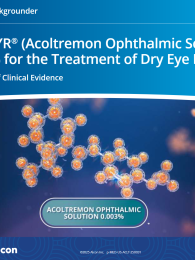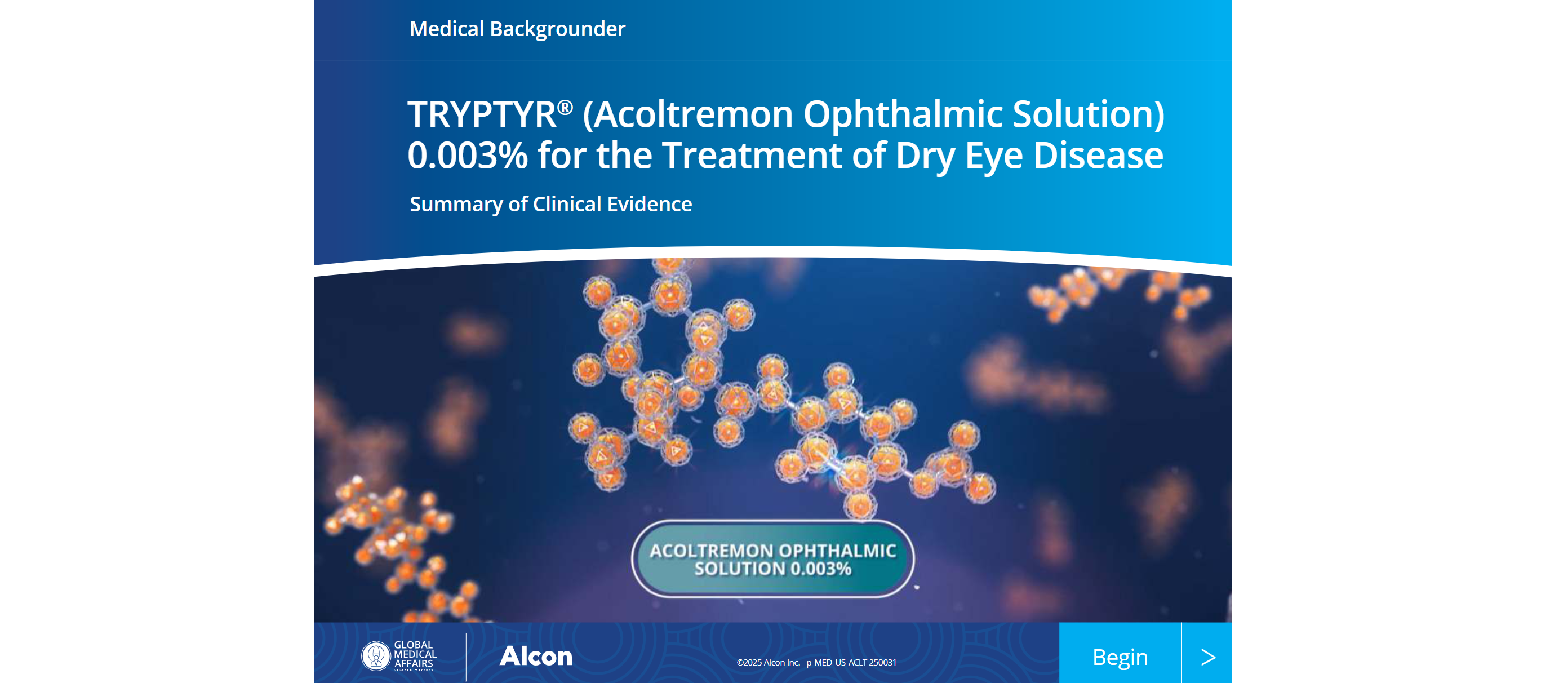

Tears are a complex mixture of proteins, lipids, mucins and aqueous that nourish, lubricate and protect the ocular surface. In dry eye disease (DED), basal tear production is altered, causing reduced tear volume and/or excessive tear evaporation. The chronic tear deficiency feeds a cycle of tear instability, ocular surface damage, inflammation, goblet cell loss and symptoms such as dryness and discomfort.
Corneal sensory nerves play an important role in tear production by sensing ocular surface changes and activating the trigeminal nerve to stimulate the secretion of tears. Located on a subset of the nerves that innervate the cornea and upper eyelid are TRPM8 (transient receptor potential melastatin 8) receptors that detect ocular surface cooling associated with tear evaporation and initiate the signaling to replenish tears. Because of their key role in regulating basal tear production, TRPM8 receptors emerged as a novel target for pharmacologic intervention of DED.
TRYPTYR® (acoltremon ophthalmic solution) 0.003% is a topical ocular neuromodulator that selectively stimulates TRPM8 receptors and has been shown to increase tear production. This medical backgrounder summarizes clinical evidence supporting the efficacy and safety of acoltremon 0.003% as a novel DED treatment.


